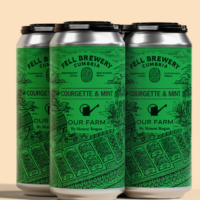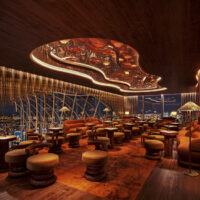It is widely believed that this year’s harvest will see Prosecco rosé become a reality, as the region plans to lift a ban on blending red and white wines to produce pink fizz.

Although there are examples of Italian brands making pink sparkling wines using grapes from Prosecco country, Prosecco rosé is not allowed under the regulations of the DOC (Denominazione di Origine Controllata), meaning that any producer making a pink fizz cannot use the word Prosecco on the label (for example, see the Freixenet pink ‘Prosecco’, which is listed as simply ‘Italian Rosé’).
However, following many years of discussion among members of the organisation that governs the production of Prosecco, known as the Conzorzio, it is believed that red grapes from this year’s vintage will finally be allowed to make Prosecco rosé (or rosato) – a major step for the region, considering the powerful pull of pink drinks, be they from Champagne, Provence, or the world of gin and mixers.
During an interview with db last week, Francesco Zonin, who is vice president of Zonin1821, one of Italy’s largest producers of Prosecco, said that he believed this year’s vintage would produce grapes that can be used to officially make sparkling rosé.
“There is a good chance with the 2018 harvest that pink Prosecco will be allowed, using red grapes from the same specific area [as the Prosecco DOC],” he said.
Such a forecast follows comments made by Prosecco DOC Consortium President Stefano Zanette earlier this year, who said that he believes “now is an appropriate time to propose that Prosecco Rosé be officially introduced into Prosecco DOC regulations.”
This step would see, he added, the rules of the DOC changed to allow the addition of a proportion of red wine to the white, before the pink blend undergoes a second fermentation in a sealed vessel to produce sparkling rosé – the standard method used to make Prosecco.
It is also suggested that Prosecco rosato must be made in the spumante style, which is a higher pressure, better fizz than the fizzante offerings from the DOC.
Importantly, it is believed that Pinot Noir will be the only grape authorised to make red wine for using in pink Prosecco, “in order to allow for the production of a quality sparkling rosé that upholds and is worthy of the Prosecco denomination,” according to Zanette.
Pinot Noir is in fact already authorised for use in the production of Pinot Noir, but only when made into a white wine, and up to a maximum of 15% of the blend.
It is the only red grape allowed in the production of DOC Prosecco, which must be made with a minimum of 85% Glera, and up to 15% of Bianchetta Trevigiana, Chardonnay, Glera lunga, Perera, Pinot Bianco, Pinot Grigio and Verdiso, as well as the aforementioned red Pinot Noir.
The choice of Pinot Noir has been made on the grounds of its potential to make high quality but delicate red wines for blending, although some will be disappointed that the Conzorzio has not mentioned allowing the use of Italian red grapes, in particular, Raboso, which is native to the Veneto, but not authorised in the production of Prosecco DOC.
Other red grapes widely planted in the Veneto – the wider region where the Prosecco DOC is located – include Merlot and Corvina, as well as a small proportion of Cabernet Franc, Cabernet Sauvignon and Carmenère.
When asked whether the addition of pink fizz to the Prosecco offer would be a good move for the DOC, Francesco said he would support such a decision, and probably make a Prosecco rosé from this year’s harvest.
However, he added that such a development must be done within strict guidelines.
“If you blend 5-10% red wine made with grapes from the same area and produce something that is similar in taste and style to Prosecco then why not?,” he began.

Continuing he said, “Other famous appellations are doing it, and I can see no problem [with Prosecco rosé] as long as producers stick to the style and terroir.”
Concluding, he commented, “If you look at the trend of rosé right now, you see rosés coming from all over Italy – and is it wrong to make rosé from Sangiovese in Tuscany? These are beautiful wines.”
For some, the potential advent of pink Prosecco may be seen as a dilution of the regional brand, which has built its success on the simplicity of the offer, and the singularity of the product.
But for the most, the commercial potential of Prosecco rosato far outweighs the possible risk to the image of this powerful sparkling wine region, which is now producing almost 550 million bottles each year*, and gearing up for the “perfect” harvest.
While it is expected that the DOC will approve the production of pink Prosecco from this year’s harvest, there is no suggestion that the DOCGs, which cover the hilly areas of Conegliano-Valdobbiadene and Asolo, will follow suit.
Zonin1821 specialises in the production of sparkling wines from Italy, making big brand fizz with both Prosecco and Moscato.
The company will be presenting the great range of sparkling wines from Italy at a masterclass in London on 1 October from 10.30 to 12pm at Asia House.
Taking in the commercial classics, such as Prosecco, along with newer examples, this will be an educational event designed to showcase the diversity and quality of Italian fizz.
It will also provide a chance to taste the wines, sparkling included, from Zonin1821’s latest project: a set of wines from Chile under the brand Dos Almas.
Presenting the wines will be Zonin1821’s chief winemaker Stefano Ferrante.
This event is free of charge but places are very limited, so please register your interest by clicking here now.
*Around 440m bottles were produced last year from DOC Prosecco and a further 100m from DOCGs Conegliano-Valdobbiadene and Asolo.




